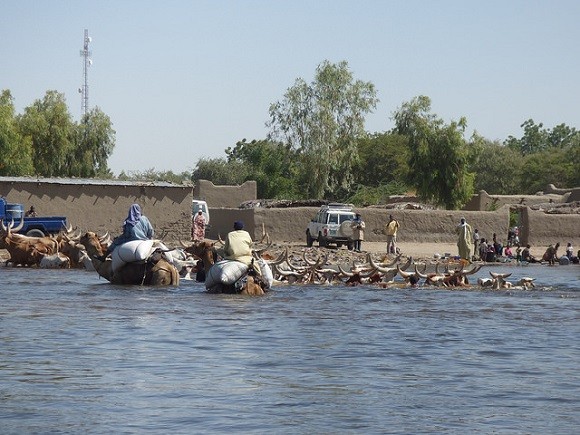 Ngouboua, on the shores of Lake Chad. Communities in the region have had to cope with an influx of refugees from Nigeria. Image credit: UN.
Ngouboua, on the shores of Lake Chad. Communities in the region have had to cope with an influx of refugees from Nigeria. Image credit: UN.One of the major challenges in the Lac region of Chad concerns how best to ensure peaceful cohabitation between several neighbouring communities. There are four key groups of people:
- Nigerian refugees who have fled towns and villages in Nigeria because of the conflict there.
- Returnees – Chadian migrants who left for Nigeria but have now returned.
- Displaced people – Chadians who have left their villages because of the threat from Boko Haram and have moved towards more urbanised areas.
- Local communities – who are absorbing the other three types of people.
It is in this context that local inhabitants have seen waves of new arrivals. Unfortunately, their daily struggles have made relations difficult. Local people have complained that the new communities have caused problems, and will create shortages.
In particular, they claim three things:
- That the new arrivals have led to difficulties over shared resources, including pasture for livestock, land to cultivate and firewood.
- There is a climate of suspicion around the new arrivals, because they are not sure exactly who they are. This has led to questions surrounding their status: are there members of Boko Haram among them? Are there informers?
- Another source of worry is the humanitarian assistance which is primarily provided to refugees, returnees and displaced people by international NGOs and the UN. This is sometimes viewed badly by local groups, even though they also receive some assistance.
Working with these leaders would help develop a shared recognition of the mutual need for peace, and could include training and awareness-raising activities as well as the development of a peaceful conflict resolution committee, bringing together members from each community.
This is not an exhaustive list. Once these actors have been identified and activities have been started, it would be beneficial to raise awareness of these issues among all the different populations involved, through or with their respective leaders. It would also be helpful to use this work to identify other people and activities who might become involved.









